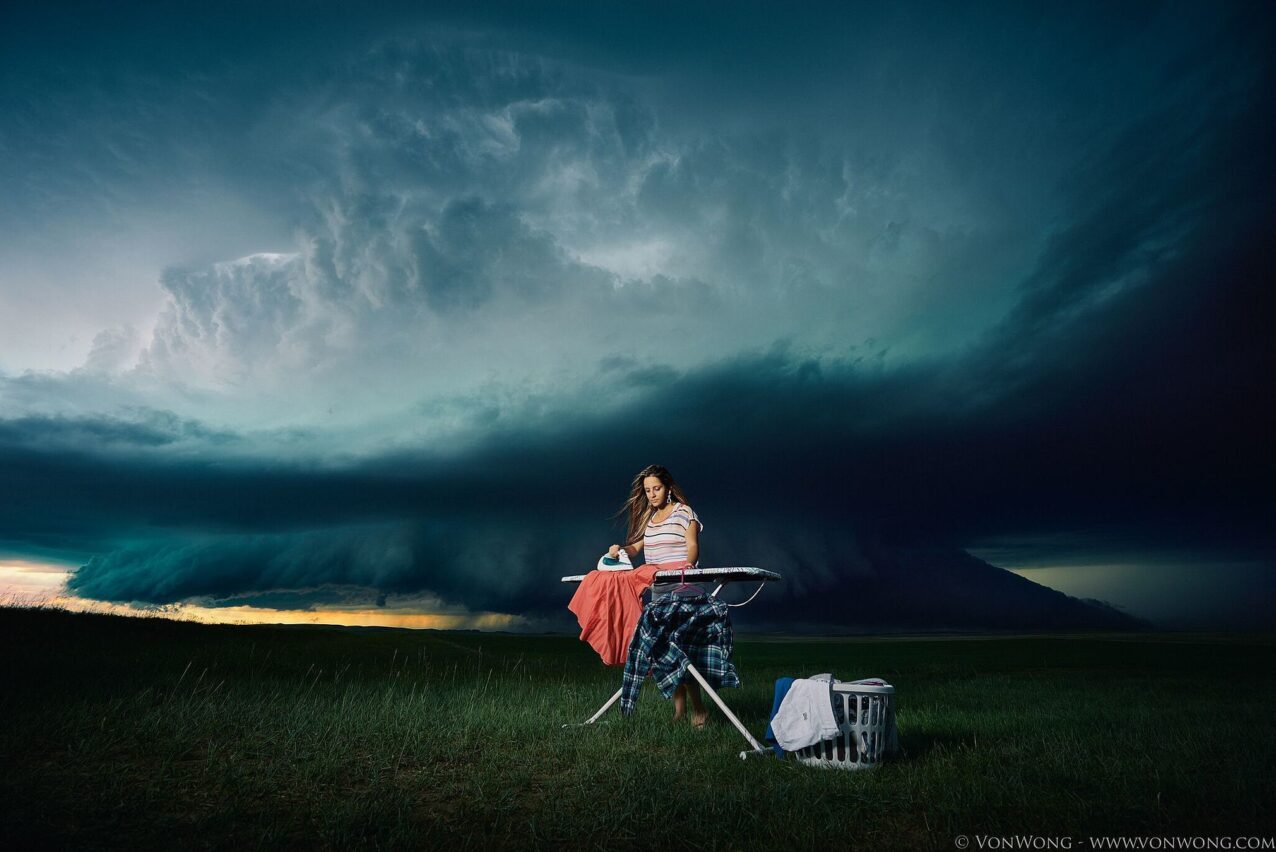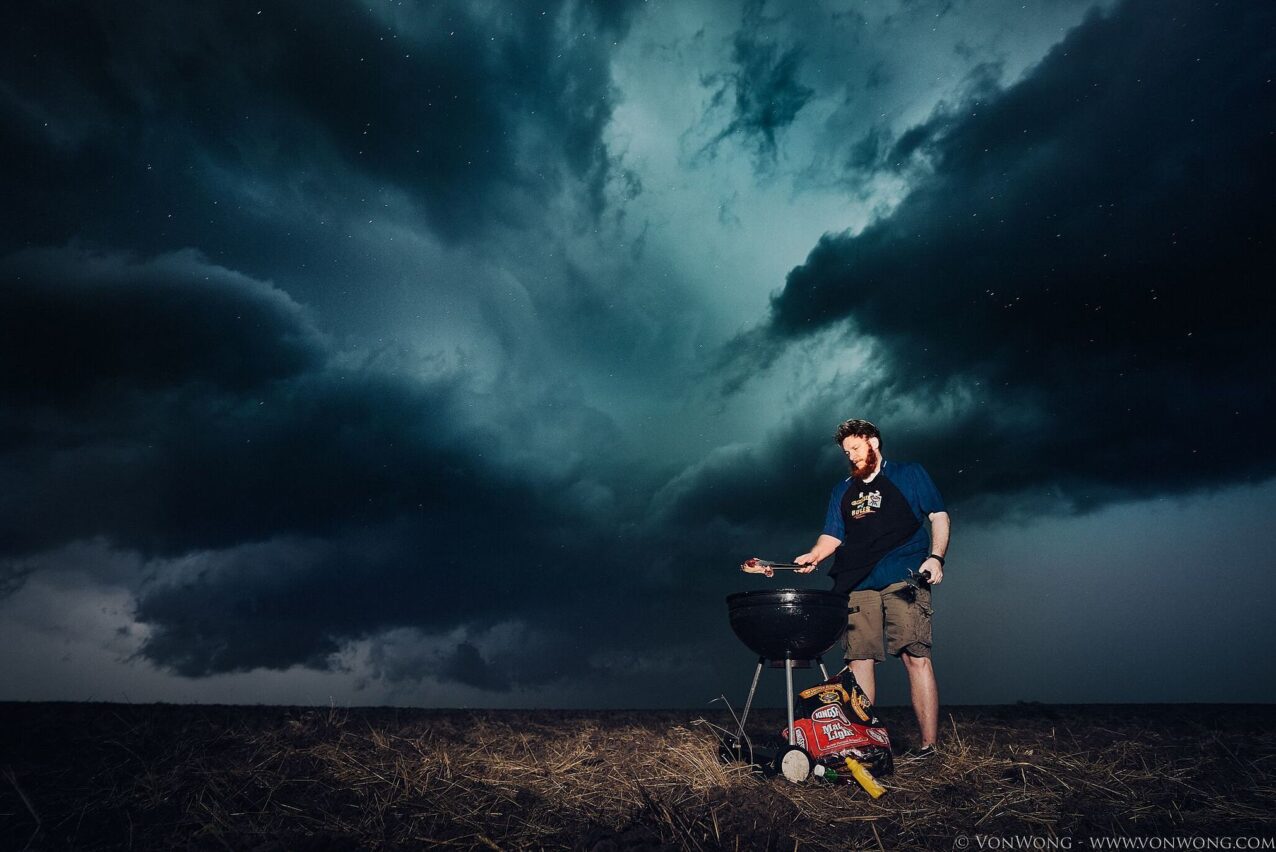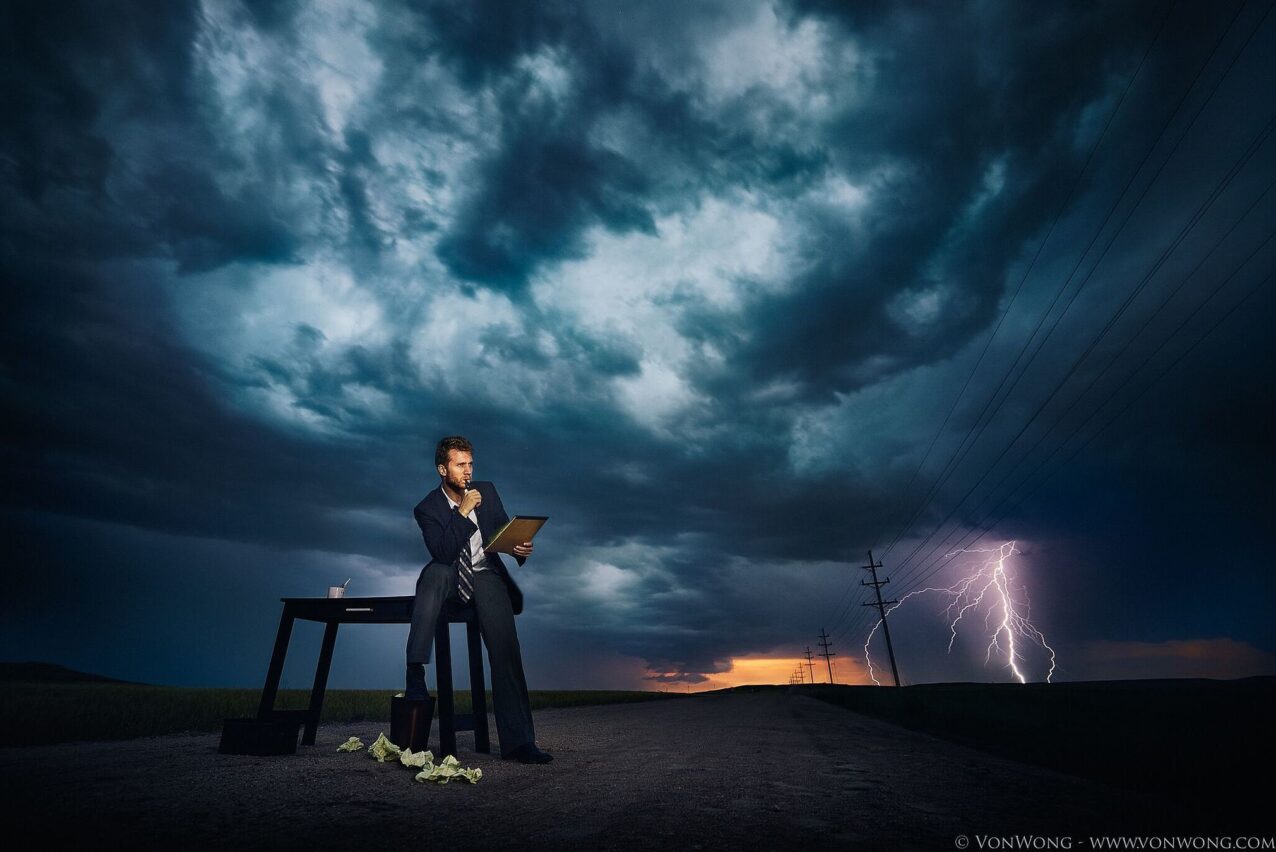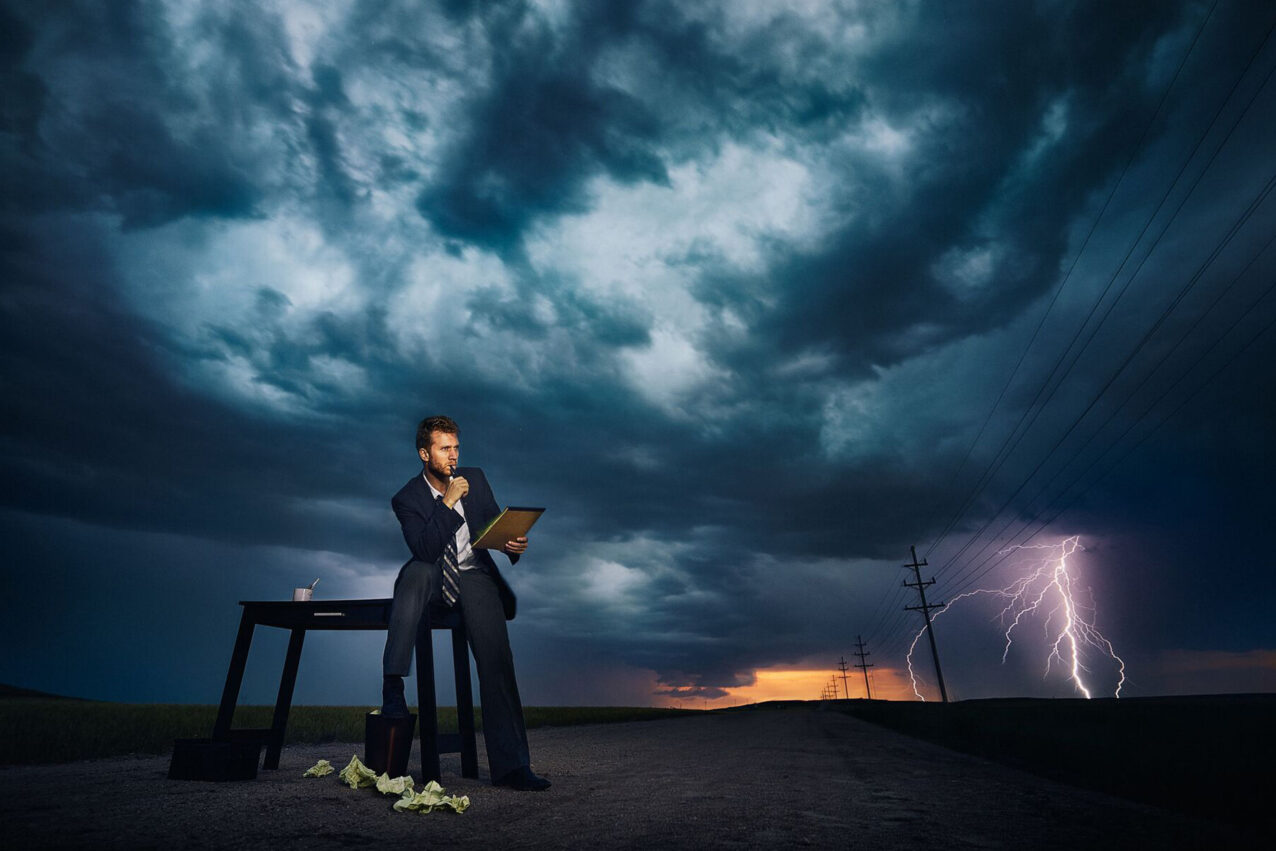“Can you imagine how complicated it would be to plan a shoot whilst chasing a storm??”
“Coordinating models, building sets & designing lighting – all without knowing where the shoot would take place, while storms zip by at who knows how many miles per hour?
It would be an absolute nightmare and impossible to pull off without funding! We should think of a different project.“ That was my first reply to my sidekick Anna, when she first dropped the idea of doing a series of stormchasing portraits. Turns out, I wasn’t entirely wrong – It was challenging, but definitely not impossible.
Putting together this photoshoot was unlike anything I had ever done before. Not only had I never chased a storm in my life, I had also never planned a project around an uncontrollable force of nature. Clearly I was going to need to find some help.
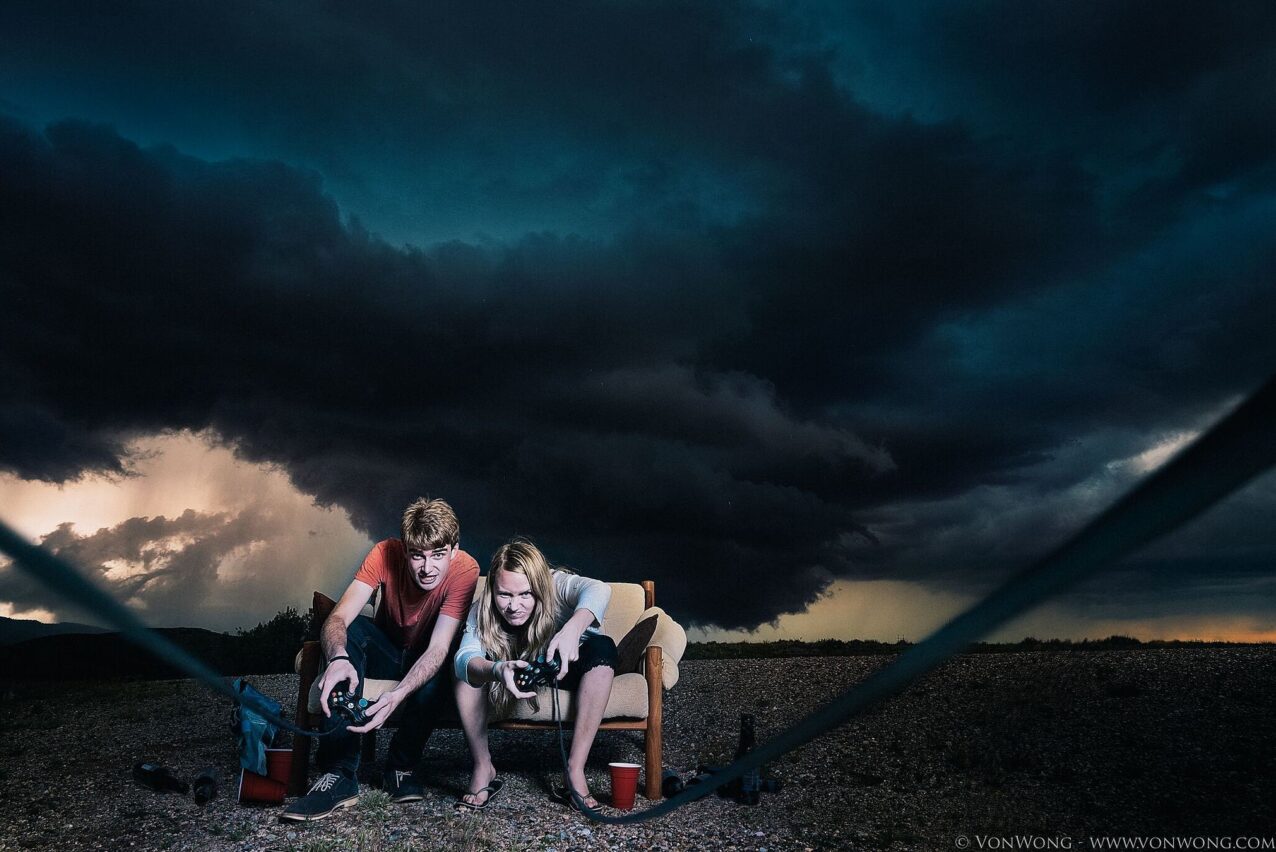
I needed to find someone that could not only safely navigate storms, but one who understood photography and would be capable of getting me in the right position to capture the shot. The internet lead me to Kelly DeLay – a weather and environmental photographer with over 7 years of chasing experience.
After describing the project, he laid out the constraints:
- No more than 10-15 minutes to set up and tear down each shot.
- No control over where we would go and where we would end up by the end of each chase day.
- No guarantees that we would get the shots.
“But do you think it’s possible?” I asked. ” Absolutely ” – he replied. And that was all the encouragement I needed to green light the stormchasing adventure.

Friends and fans located across 7 different states interested in assisting or modelling were contacted, in the off-chance that storms developed close to them. Props, small enough to fit in a car were sourced through a combination of craigslist and dumpster diving were also prepared and put on standby.Meanwhile, a small team was assembled to film and document the entire adventure. Ryan, a local fan and photographer from Colorado, graciously offered to come with his ambulance. Although not the fastest or the most nimble, it was capable of fitting the spontaneous props we would be transporting around with us – from sofa to toilet seat.
Another advantage was that we could transform the ambulance into a mobile protected light-box to make sure we didn’t loose time setting up lights while simultaneously protecting my 7,000$ Broncolor Move flash pack. Gathering a Phantom 3 drone from DJI along with a couple A7s cameras from Sony so that Pat Black could capture behind the scene video footage was the final step of the equation. Before we knew it, it was time for us to get stormchasing.
I thought that Kelly had been exaggerating when he said that I would have 10-15 minutes per shot. I learned very quickly that he wasn’t. The storms we were tracking would move at over 30 mph, and too often, we would loose precious time trying to find the perfect road to get us into the right position to set up our shots. Our itinerary, for 8 hours a day looked something like this:
